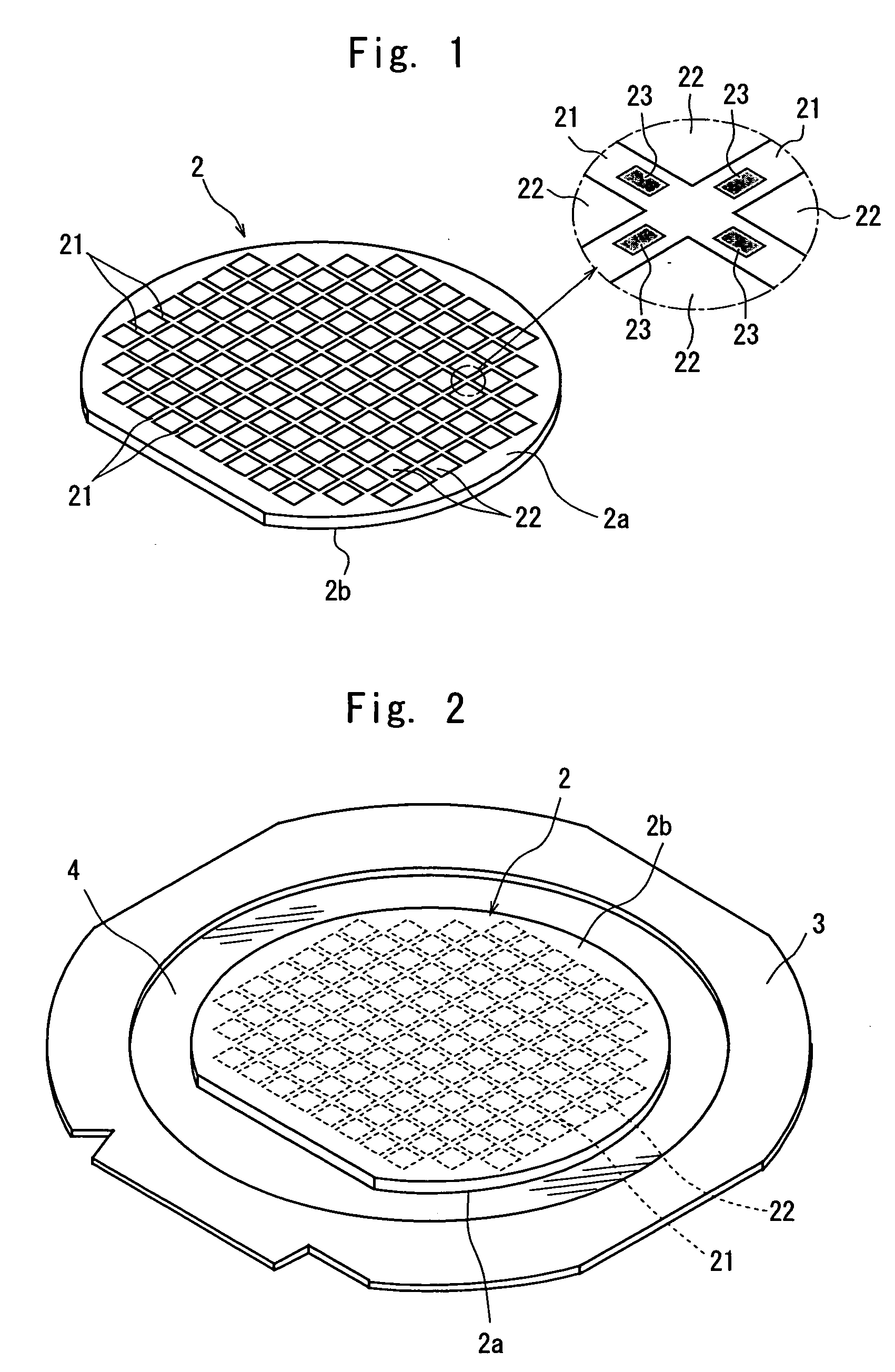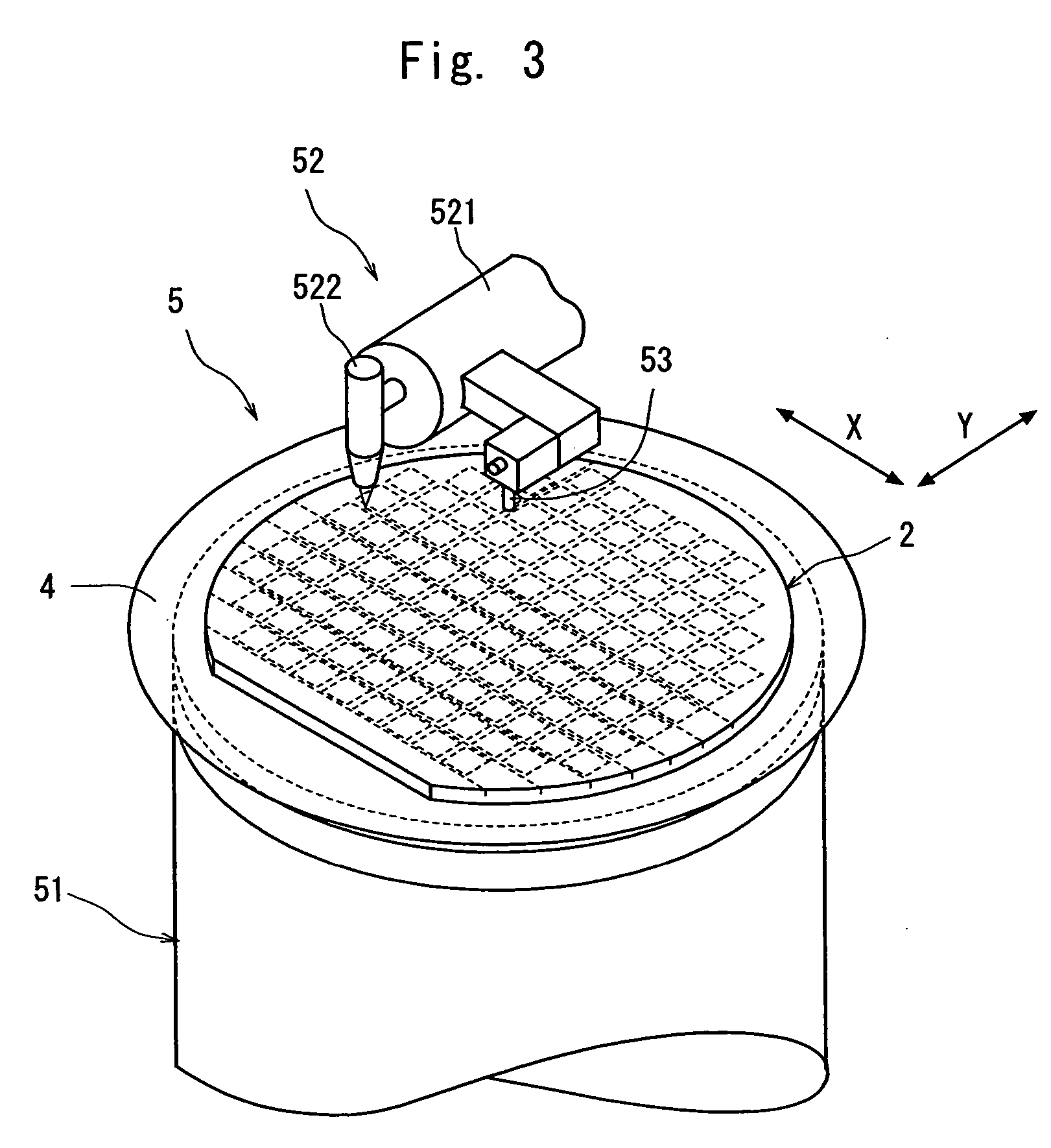Wafer dividing method
a technology of dividing method and wafer, which is applied in the direction of semiconductor/solid-state device testing/measurement, manufacturing tools, instruments, etc., can solve the problems of reducing the quality of devices, unable to form uniform deteriorated layers, and the constitution of each device is detected, so as to prevent the formation of the obtained devices from being detected
- Summary
- Abstract
- Description
- Claims
- Application Information
AI Technical Summary
Benefits of technology
Problems solved by technology
Method used
Image
Examples
Embodiment Construction
[0021] Preferred embodiments of the wafer dividing method of the present invention will be described in more detail hereinunder with reference to the accompanying drawings.
[0022]FIG. 1 is a perspective view of a semiconductor wafer to be divided into individual chips by the wafer dividing method of the present invention. The semiconductor wafer 2 shown in FIG. 1 is a silicon wafer, a plurality of areas are sectioned by a plurality of streets 21 which are arranged in a lattice pattern on the front surface 2a of the semiconductor wafer 2, and a device 22 such as IC or LSI is formed in each of the sectioned areas. A plurality of test metal patterns 23 called “test element group (TEG)” for testing the function of each device 22 are partially formed on the streets 21 of this semiconductor wafer 2.
[0023] The front surface 2a side of the semiconductor wafer 2 constituted as described above is put on a support tape 4 which is composed of a synthetic resin sheet such as a polyolefin sheet ...
PUM
| Property | Measurement | Unit |
|---|---|---|
| wavelength | aaaaa | aaaaa |
| repetition frequency | aaaaa | aaaaa |
| repetition frequency | aaaaa | aaaaa |
Abstract
Description
Claims
Application Information
 Login to View More
Login to View More - R&D
- Intellectual Property
- Life Sciences
- Materials
- Tech Scout
- Unparalleled Data Quality
- Higher Quality Content
- 60% Fewer Hallucinations
Browse by: Latest US Patents, China's latest patents, Technical Efficacy Thesaurus, Application Domain, Technology Topic, Popular Technical Reports.
© 2025 PatSnap. All rights reserved.Legal|Privacy policy|Modern Slavery Act Transparency Statement|Sitemap|About US| Contact US: help@patsnap.com



